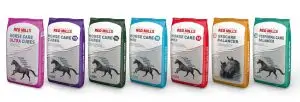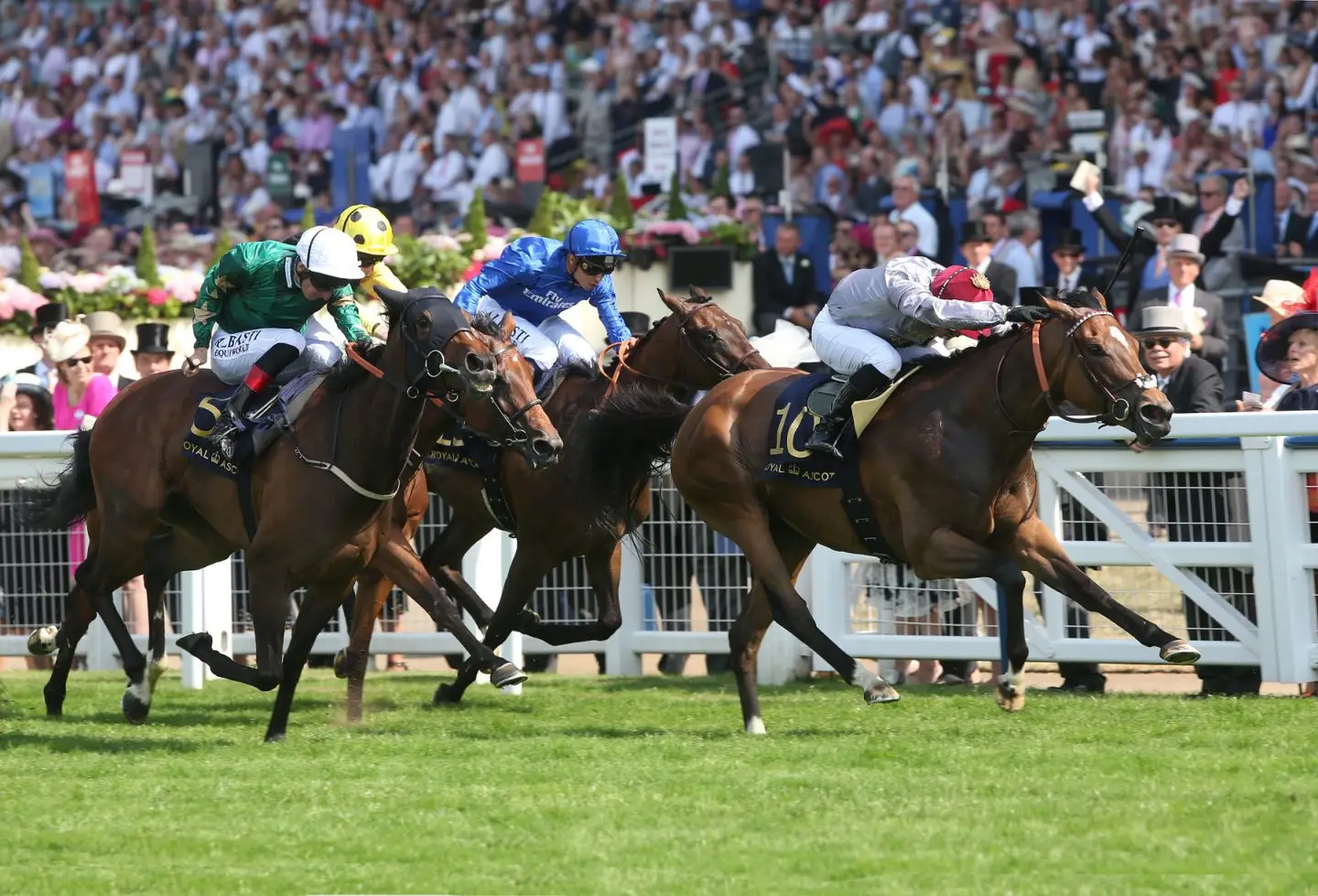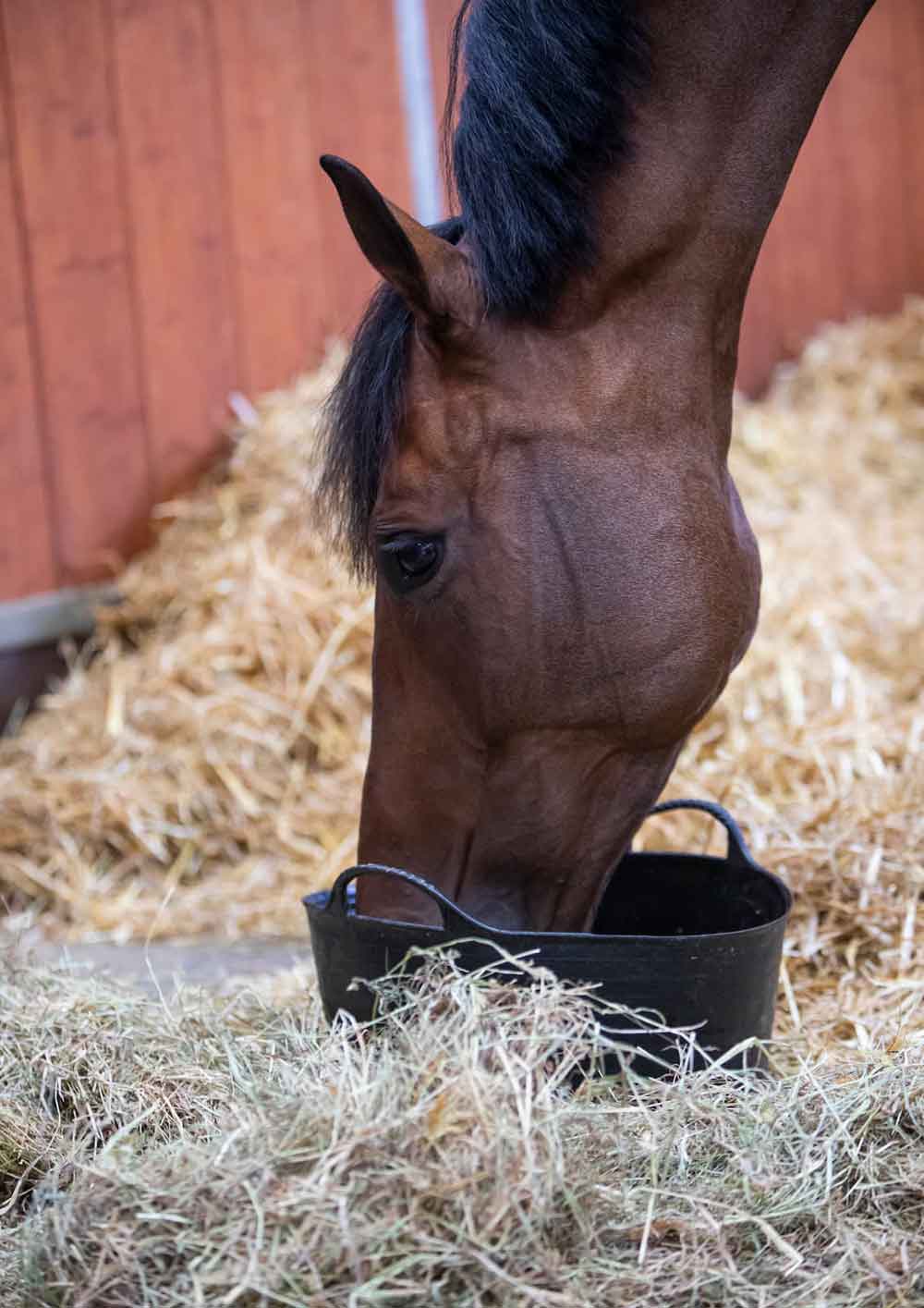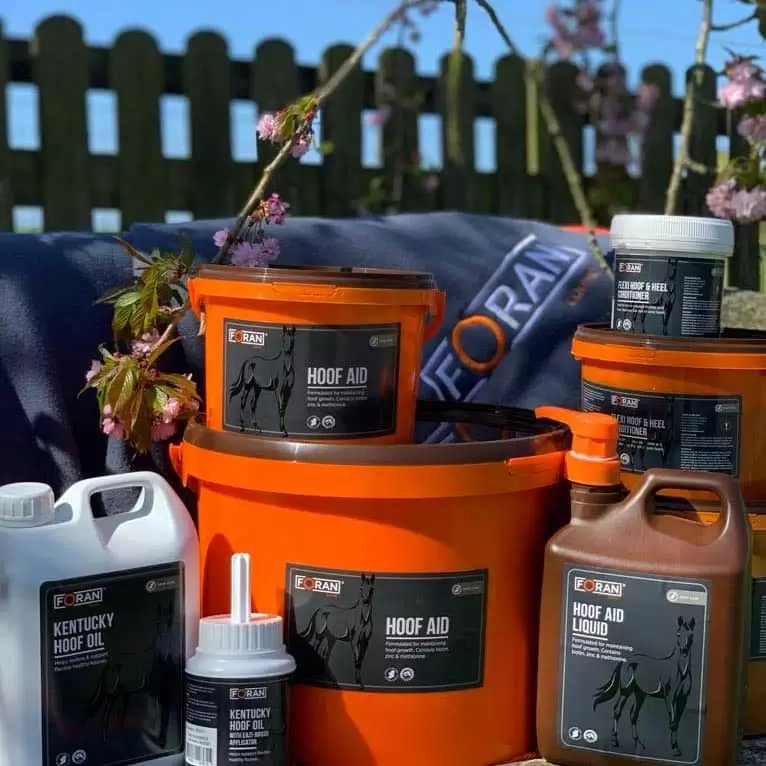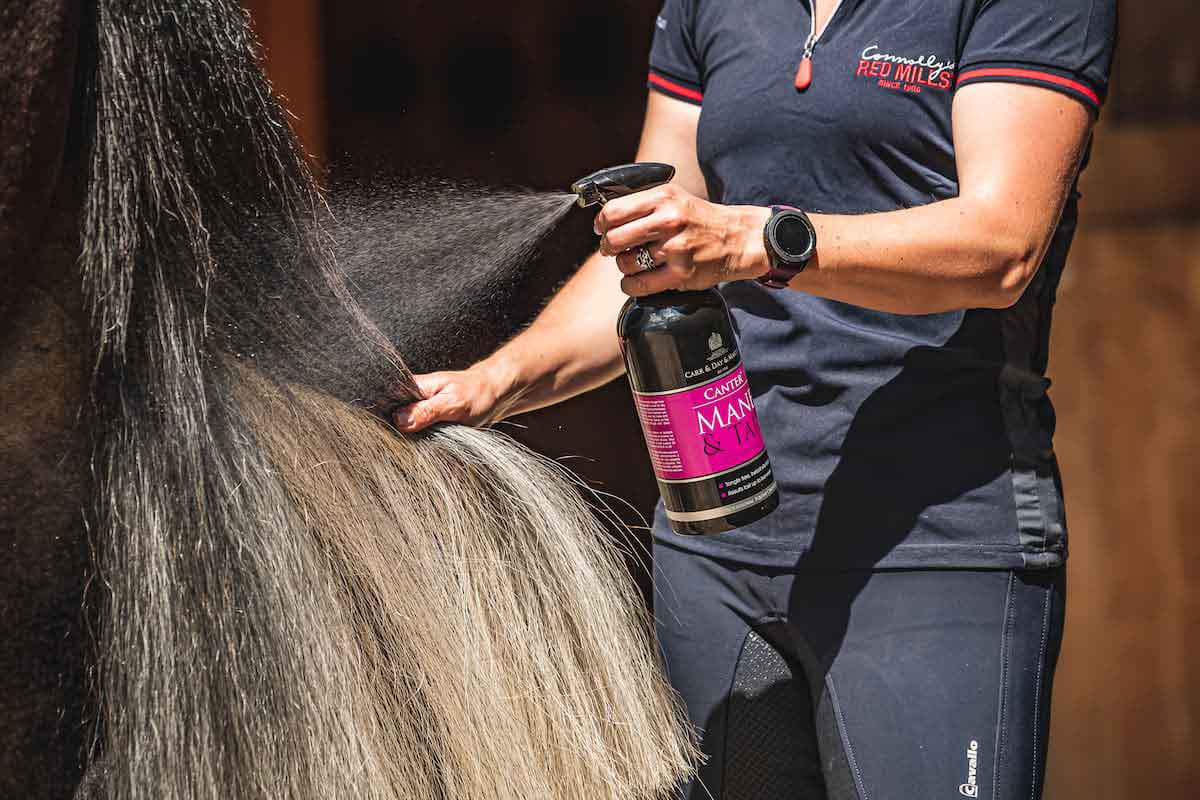Symptoms, causes, and how to manage equine gastric ulcers
What is EGUS?
The term Equine Gastric Ulcer Syndrome (EGUS) was first used in 1999 to describe erosive and ulcerative diseases of the stomach in the horse. EGUS can be subdivided into Equine Glandular Gastric Disease (EGGD) and Equine Squamous Gastric Disease (ESGD) according to the location of the ulceration.
The horse’s stomach contains two different types of surfaces; the non-glandular, squamous mucosa on the top half (essentially similar to the lining of the oesophagus) should have a pale pink and shiny appearance in a healthy stomach. And the glandular mucosa on the bottom half, which is darker in colour and contains the stomach acid producing cells.
Ulcers can happen in either location, but are most common along the ‘join’ in the two different surfaces of the stomach, the margo-plicatus or on the squamous portion (see Diagram 1).
Excessive acid exposure is thought to be the predominant cause of ulceration in the non-glandular, squamous mucosa. The correlation between exercise and ulcer disease is believed to be caused by compression of the stomach during trot / canter / gallop which in turn results in acid exposure to the squamous mucosa.
Diagram 1: The Stomach of the Horse
The incidence of EGUS varies with breed, use, management and level of training, with the highest occurrence in thoroughbred racehorses. As many as 80-100% of horses are affected within 2-3 months of training.
Horses at pasture have a lower incidence of EGUS. During grazing there is a constant chewing, which provides a continuous flow of saliva and ingesta that buffers the stomach, helping to neutralise the stomach acid.
Table 1. Prevalence of ESGD according to breed / discipline
| Breed | Light – Moderate Training | Intense Training / Competition |
| Thoroughbred racehorses | 37% | 80-100% |
| Standardbred racehorses | 44% | 87% |
| Endurance racehorses | 48% | 66-93% |
| Show / sport horses | 17% | 58% |
| Leisure horses | 37% | 59% |
| Horses at grass | 11% | n/a |
Clinical symptoms of EGUS are numerous and often vague. Different horses cope with EGUS in different ways, where one horse, with EGUS (grade 3), may display the classic symptoms; poor performance, poor coat and poor appetite. Another may display only one symptom or even no symptoms at all – but can have an equally bad ulcer score.
Table 2. Clinical symptoms of gastric ulcers
| Clinical signs in adult equids | Clinical signs in foals |
| Acute colic | Diarrhoea |
| Recurrent colic | Abdominal pain |
| Excessive recumbency (lying down) | Restlessness |
| Poor body condition | Rolling |
| Anorexia / poor appetite | Lying in dorsal recumbency (on his back) |
| Poor performance | Excessive salivation |
| Changes in attitude / temperament | Bruxism (grinding teeth) |
| Posturing (as if to urinate) often | Poor appetite |
| Low energy | Reduced nursing |
Just about everything we do with our riding horses and our elite equine athletes can predispose them to EGUS:
- Removing them from their natural environment (the paddock) with their buddies, or ‘herd’, where they can graze freely all day.
- Housing them in a stable, on their own, where there may be interruption of food supply over the day i.e. they are not continuously chewing.
- Feeding them diets with large amounts of concentrates, exercising them, transporting them to shows and competitions. Housing them in strange environments.
- Intensive exercise and training. Treadmill studies reveal increased abdominal pressure in the galloping horse, this is believed to contribute to gastric ulcers by contraction of the stomach causing stomach acid to be splashed onto the squamous mucosa at the top of the stomach.
All of these factors will contribute to EGUS, depending on the individual of course, it is true that some horses cope better with this sort of stress than others.
Table 3. Risk factors associated with EGUS
| Stress |
| Transportation |
| Hi-starch diet |
| Being housed in a stable (as opposed to 24h turn out) |
| Intermittent feeding |
| Intense exercise |
| Racing |
| Illness |
| Non-steroidal Anti-inflammatory Drug (NSAID) Therapy |
| Management changes |
Diagnosis is usually based on clinical history, clinical signs and response to treatment. Currently the only reliable diagnostic tool for confirmation of the presence or absence of EGUS is gastroscopy, (performed after a 12-18 hour fast) which involves passing a long endoscopic camera down into the horse’s stomach to visualise the ulcers, or the absence thereof.
Gastroscopy is both invasive (sedation may be necessary to carry out the examination) and costly. There have recently been investigations into using a non-invasive ‘sucrose test’ as a method of diagnosis, however, initial test results have not been promising – further trials are needed. A faecal occult blood test has also showed some promise, although accuracy of diagnosis is as low as 64%.
Table 4. Gastric Ulcer Scoring
| Grade 0 | Normal stomach; lining is intact and no reddening of squamous mucosa |
| Grade 1 | Stomach lining is intact, but there are areas of reddening or keratinisation on squamous mucosa |
| Grade 2 | Stomach has small single or multiple areas of shallow ulceration or keratinisation |
| Grade 3 | Stomach has large single or multiple areas of ulceration or keratinisation |
| Grade 4 | Stomach has extensive ulceration, often areas of ulceration merging to give deep ulceration |
Keratinisation is the term given to describe old or healing ulcers, it appears as yellow ‘scar’ like tissue formation on the lining of the stomach. Active ulcers will be red in appearance and often bleeding. Dark stools are an indicator of stomach or intestinal ulceration – the blood bleeding from the ulcers is digested in the gastrointestinal tract and passes as black faeces.
Effective treatment of EGUS focusses on increasing the pH of the stomach by inhibiting or ‘buffering’ stomach acid, which provides a better environment to allow ulcer healing (usually medication such as ‘GastroGard’, also known as omeprazole, will be prescribed by the veterinary surgeon) and dietary and environmental management.
Newly formulated Nutri-Guard by Foran Equine, has been shown to promote a better healing environment within the stomach. The combination of prebiotics, post-biotics, beta-glucans, Pectin, B-vitamins and amino acids in Nutri-Gard promotes growth of gut friendly bacteria to aid digestion and optimise feed utilization in the large intestine.
Dietary management, to help reduce the risk of gastric ulcers, largely comprises of increasing chewing activity, to increase saliva production, therefore ad lib access to hay is advised. Studies have reported a lesser incidence of gastric ulcers in horses fed alfalfa hay (which is high in calcium and protein) compared to normal grass hay. Reducing the starch in the diet has been scientifically proven to reduce the incidence of gastric ulcers.
One study done on thoroughbred racehorses in training found that horses that had access to pasture turnout daily had a lower incidence of EGUS, whilst this is not possible in every training environment, it is a good idea to just let your horse ‘be a horse’.
For horses that are prone to EGUS, we recommend feeding a high quality, low starch concentrate, such as Horse Care Ultra, Horse Care 10 Cubes or Mix or Horse Care 14 Cubes or Mix. Horse Care Ultra is one of the lowest (if not the lowest) in starch complete feeds available on the market at only 4%. Horse Care 10 and 14 are also ‘low starch’ feeds at less than 15 % starch. Not only are these diets high in digestible fibre and low in starch (therefore they mimic the horses natural diet perfectly) but they also offer a high oil content – to provide an alternative energy source for the performance horse. Horse Care contains natural acid buffers to help neutralise stomach acid and yeast prebiotics to aid the horse’s natural digestion.
Connolly’s Red Mills Define and Shine is also a low-starch conditioning pellet that is high in quality protein including branch chain amino acids (BCAASs) and oil including omega-3 fatty acids, that is suitable to be fed to ulcer-prone horses that need to put on condition and improve muscle definition. Its starch content is only 15.5 % so it is extremely useful for these ‘ulcer-prone’ horses that usually lack topline and condition.
Table 5. Dietary management of horses prone to EGUS
| Limited fasting periods |
| Limited feeding of starch |
| Consider the use of a gastric nutraceutical |
| Provision of good quality alfalfa or grass hay ad lib |
| Pasture turn out (where possible) |

